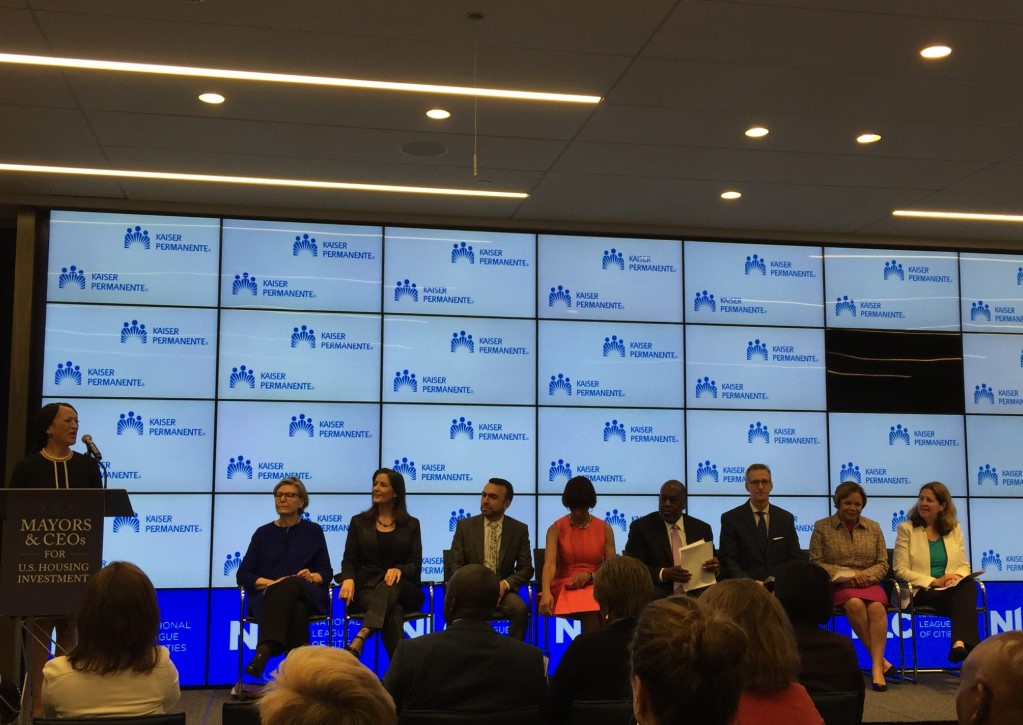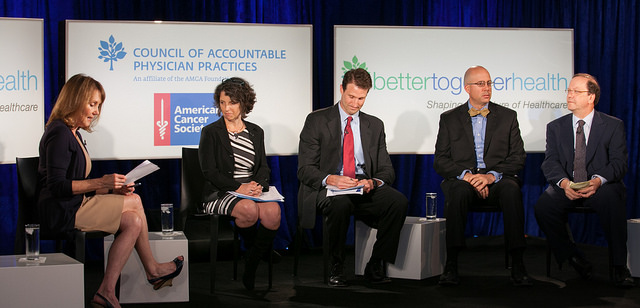Children’s early acquisition of language is a strong predictor of overall development, including success in school and lifelong health. Low literacy rates correlate with high rates of teen pregnancy, school absenteeism, and crime rates, which all perpetuate the cycle of poverty.
Since learning to read is one predictor of a child’s future health, Southern California’s Kaiser Permanente’s Educational Theatre Program has created a production focused on literacy that reached 26,439 children in 2011. We spoke with the region’s director, Gerry Farrell, to gain a little history and insight about this innovative approach to improving literacy.
CTH Blog:
Can you explain what the Educational Theatre Program is?
Gerry Farrell:
For more than 25 years, Kaiser Permanente has brought health education to our communities through the Educational Theatre Program (ETP). Through music, comedy and drama, our live theater programs are offered to schools and communities free of charge in each of Kaiser Permanente’s eight regions (Northern California, Southern California, Colorado, Northwest, Mid-Atlantic States, Ohio, Georgia and Hawaii). Each department brings their own unique style and flavor to address the specific demographics and needs of the communities they serve.
These programs are developed by theater professionals in collaboration with health educators, community advisory committees and Kaiser Permanente physicians. A number of important health topics are covered, such as healthy eating, physical activity, diversity, peer pressure, conflict management, bullying prevention, domestic violence, grief and loss, depression, sexually transmitted diseases, and drug, alcohol and tobacco abuse.
CTH Blog:
How did literacy become a topic for Southern California’s Educational Theatre Program?
Farrell:
Over the years, we received numerous requests from educators about creating a literacy program.
We know with literacy, especially language skills, there is a narrow window of opportunity from a developmental perspective. If a child hasn’t learned these skills by about 8 or 9 years of age, then their statistical chances for success in life rapidly drops; and by success, I mean everything from being healthy, to mortality rates, to having self-esteem and becoming a contributing member of society.
Promoting literacy seemed like a natural fit for educational theater and it connected to our core mission of using theater as a medium for inspiring our audiences to make healthy choices.
In 2003, we started a pilot program designed to help support our organizational efforts around national programs, such as TV Turnoff Week and Reach Out and Read. The pilot program was such a success that we spent the next few years delving deeper into the issue and finding the best way to approach this topic with our school-based audiences.
CTH Blog:
What are some of the literacy programs you’ve created?
Farrell:
We created a multi-faceted program, which not only includes the play Jay and E and the Zig Zag Sea for kindergarten, first-grade and second-grade students, but also BookShare, an in-class activity which revolves around reading and sharing a book. Furthermore, we have a family event, The World of Words, which addresses how to create a print-rich environment in the home.
CTH Blog:
Speaking of reading in the home, how do you address language barriers?
Farrell:
A great many of the parents we talk to have concerns over speaking to their children or grandchildren in another language besides English. We tell them that literacy comes in all languages, and a key component of good language skills are families having conversations with each other.
What’s alarming to me is there are studies that show that fewer than half of parents in the United States (48 percent) read to their young children on a daily basis. I’ve learned it doesn’t matter what language you are speaking to the child or your proficiency in language, it’s about the interaction you are having with the child and creating a positive experience together with a book.
CTH Blog:
So, how does Jay and E and the Zig Zag Sea help kids learn to read?
Farrell:
The play is about a young boy who is afraid of words, especially the ‘long scary ones.’ As Jay journeys through the play, the audience gets to help him overcome his fear by using sound-out techniques. We present the ‘One letter, one sound, one word‘ song as a key educational moment, couched in a sing-along. In the play, Jay is faced with many different situations where he must overcome his fear of words.
The goal of the program is really about inspiring a love of story, a love of the library and a love of books.
CTH Blog:
But why theater? How would a theater production help a child learn to read?
Farrell:
Theater is a powerful medium. People relate emotionally, psychologically and mentally to characters played by real people rather than to words on a page, and we use the imagination, interaction and immediacy of theater to empower and inspire audiences through stories and modeling of positive behavior.
CTH Blog:
Is there an experience you can share when you felt the most proud of these productions?
Farrell:
Many of the students we see have less than five books in their home. So, when we give each student a book to have for their very own, it’s a special moment. One 6-year-old boy, after receiving his book, announced to those around him, “This is the best day of my entire life!”
For more on the link between early childhood literacy and lifelong health, check out our interview with Barry Zuckerman, MD.




